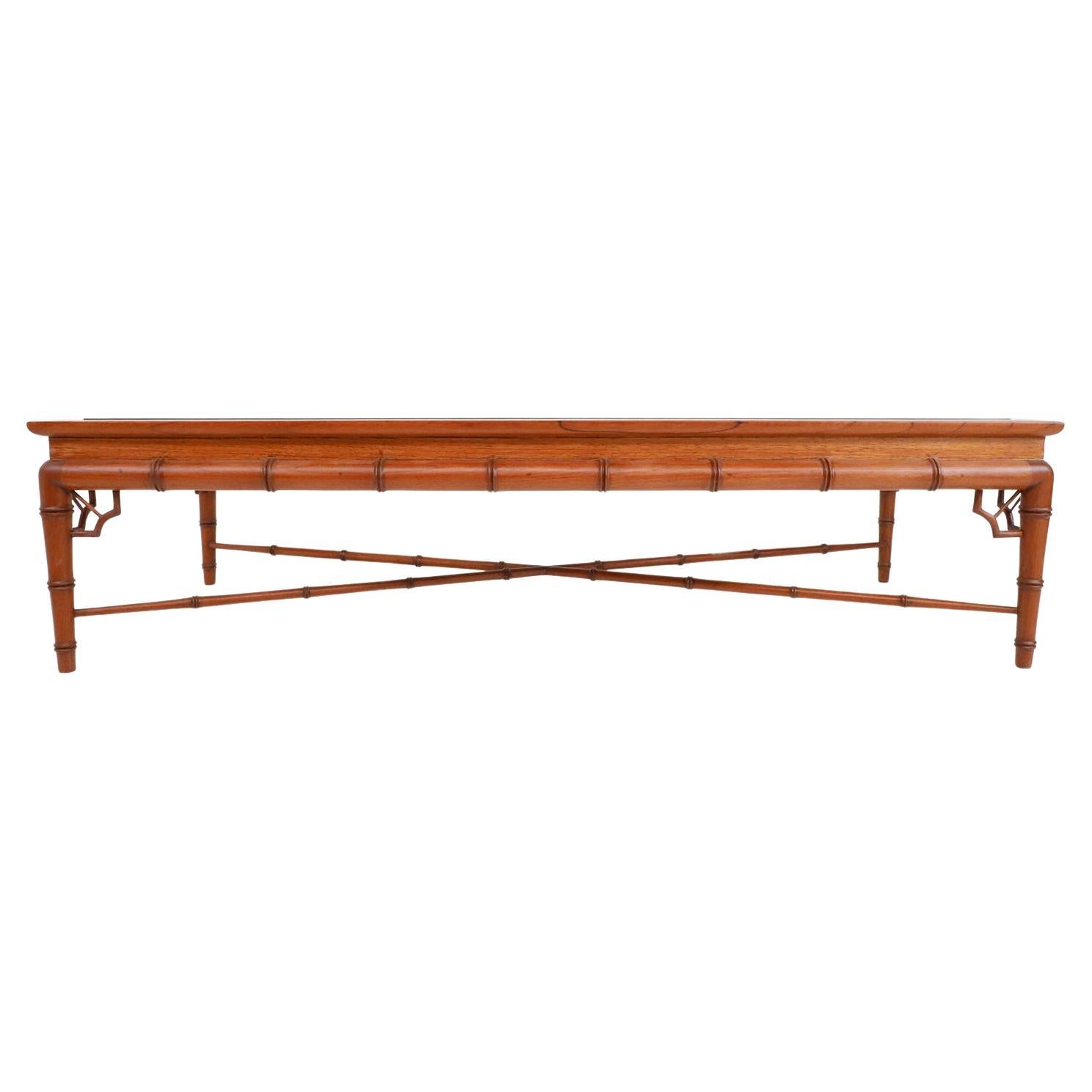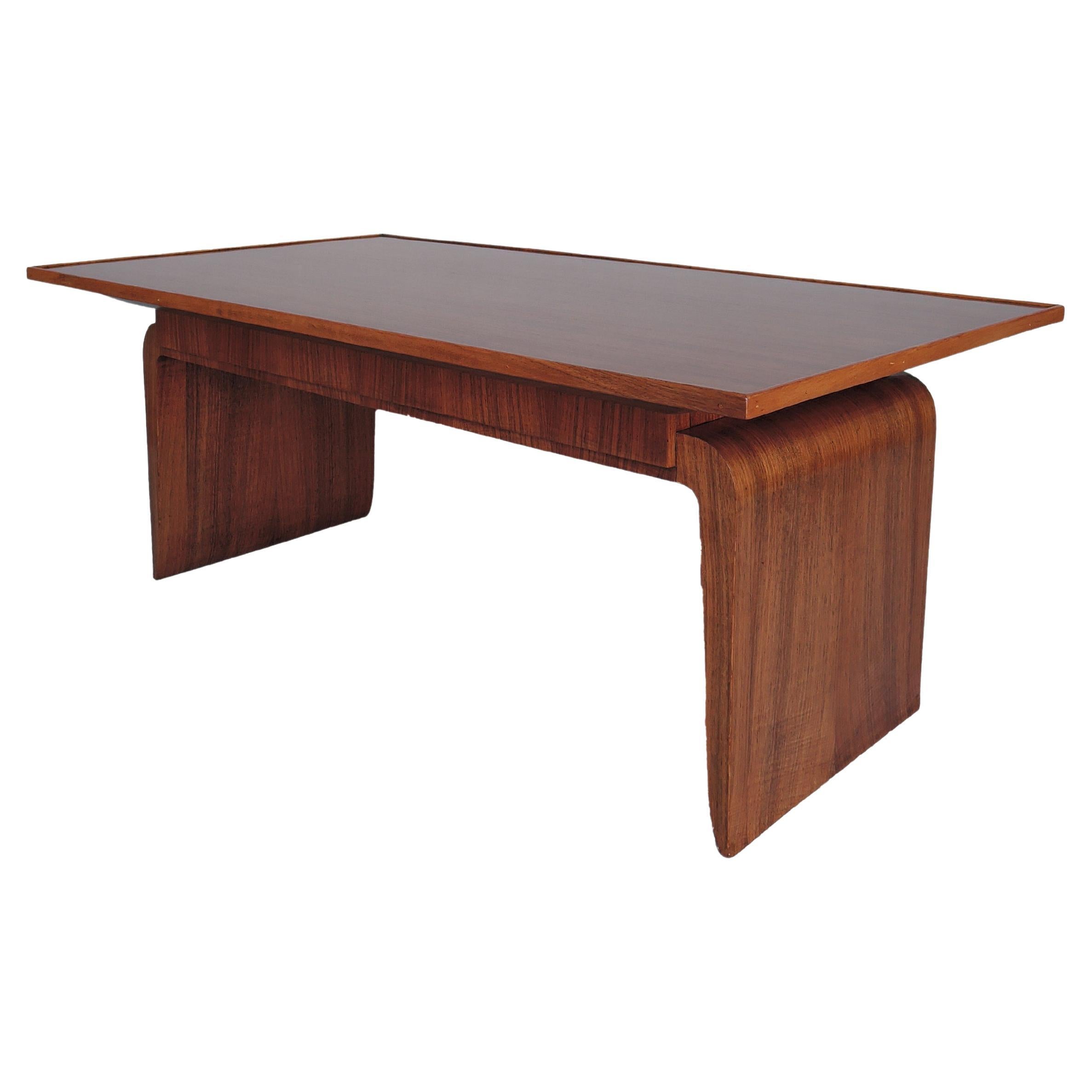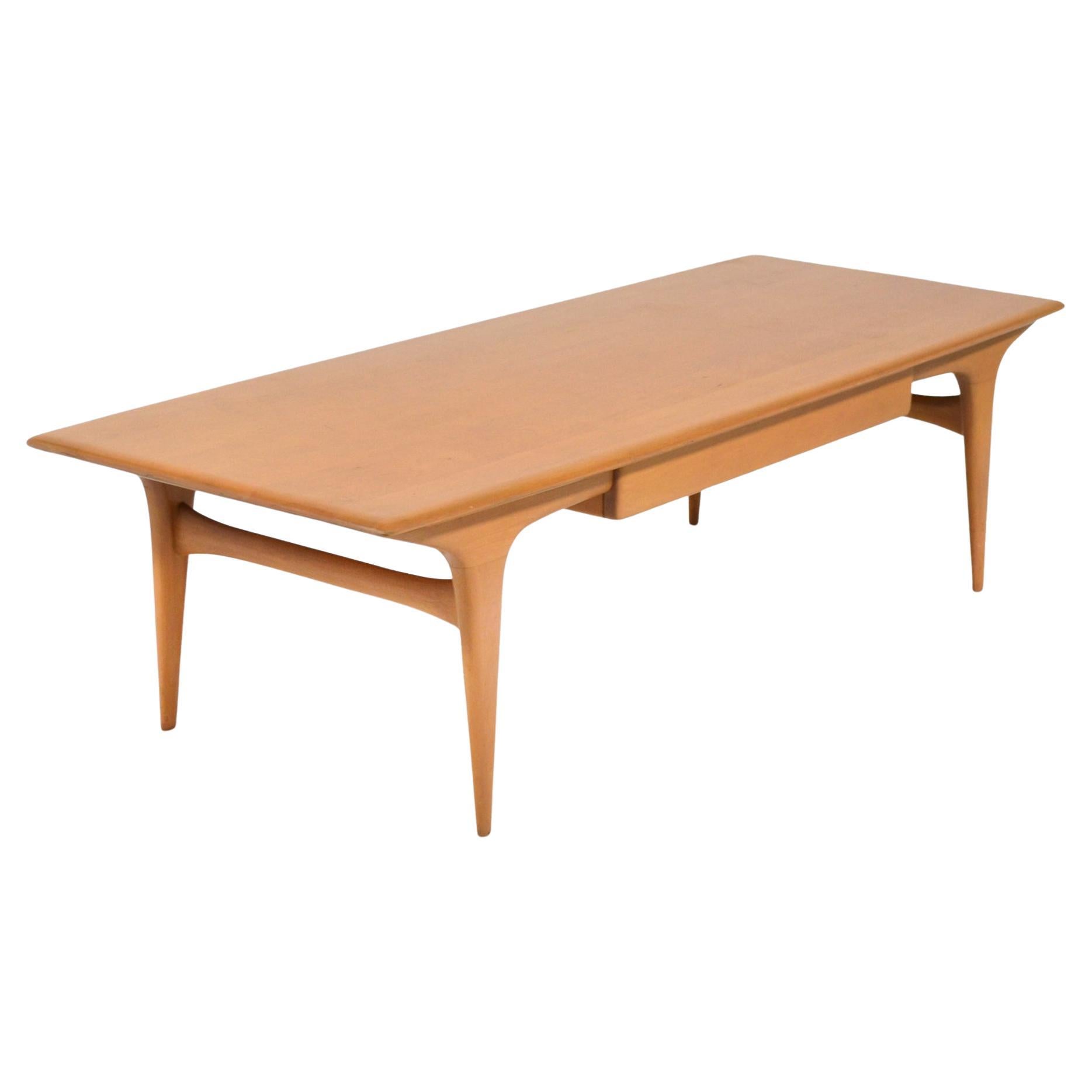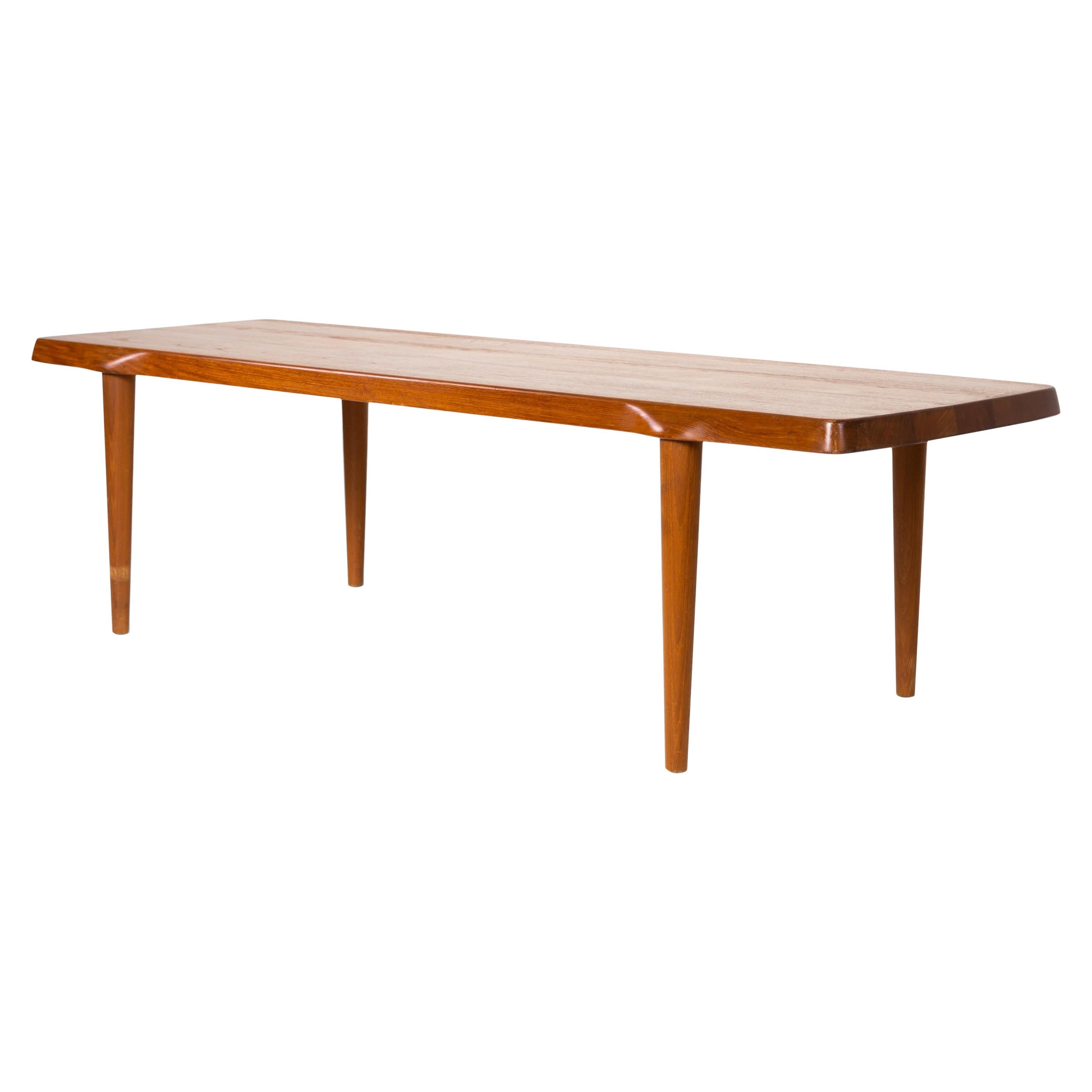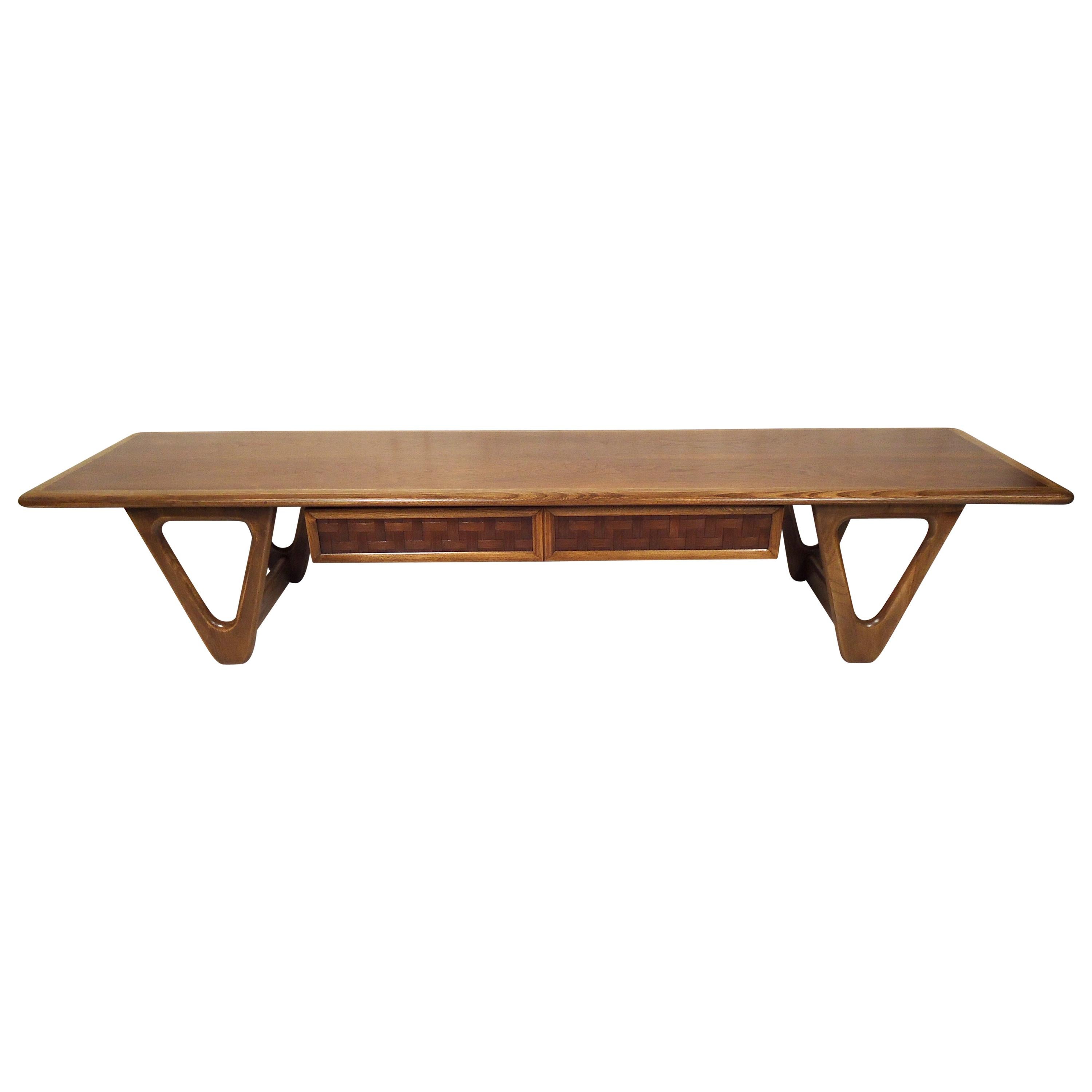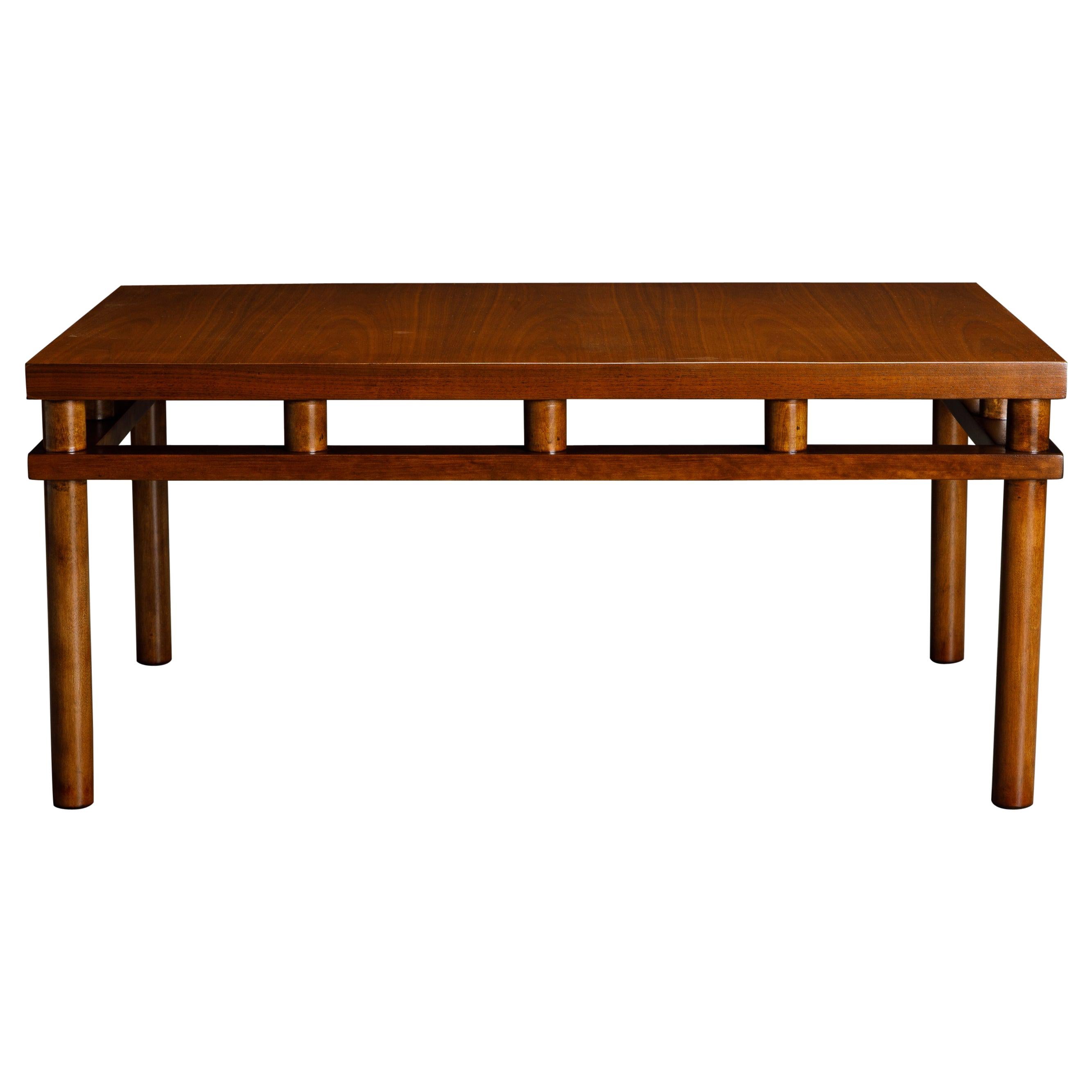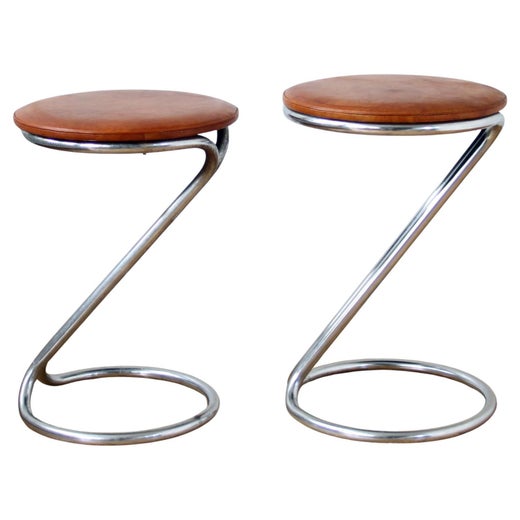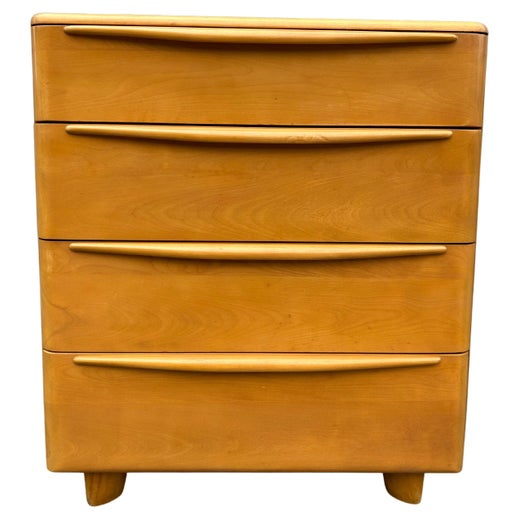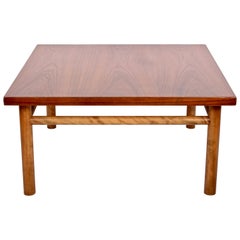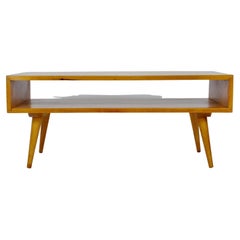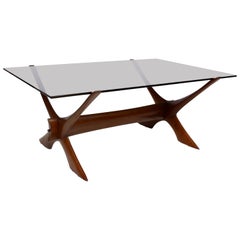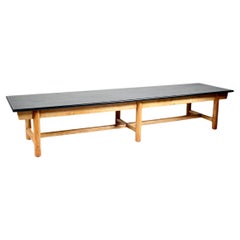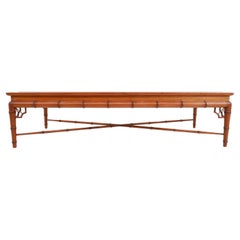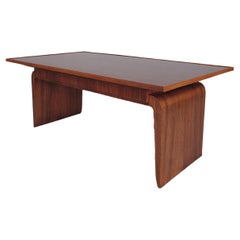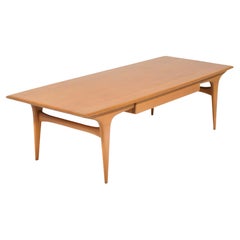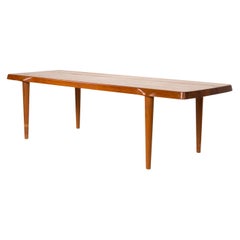Early Gilbert Rohde for Heywood Wakefield Bentwood Coffee Table
About the Item
- Creator:Heywood-Wakefield Co. (Manufacturer),Gilbert Rohde (Designer)
- Dimensions:Height: 16 in (40.64 cm)Width: 30.5 in (77.47 cm)Depth: 18 in (45.72 cm)
- Style:Art Deco (Of the Period)
- Materials and Techniques:
- Place of Origin:
- Period:
- Date of Manufacture:Circa 1930
- Condition:Refinished. Wear consistent with age and use. With minor nicks and staining to surface and without repairs.
- Seller Location:Bainbridge, NY
- Reference Number:Seller: 38529623C0SM051251stDibs: LU913935911182
Gilbert Rohde
Pioneering self-taught industrial designer, writer and teacher Gilbert Rohde helped define the earliest phase of modernism in the United States. He is one of the most influential figures of 20th-century design and is credited with helping legendary mid-century modern furniture manufacturer Herman Miller avert financial disaster during the Great Depression.
Born in New York City, Rohde studied painting at the Art Students League after high school. He found lucrative employment, first as a political cartoonist and then as a catalog illustrator for American department stores. He was particularly enthralled with drawing furnished interiors.
Rohde began to design furniture in his spare time. He traveled to the Bauhaus school in Germany and the International Exhibition of Modern Decorative and Industrial Arts in Paris, and drew on the Art Deco movement and the work of designers such as Émile-Jacques Ruhlmann in his early pieces. Rohde opened his own studio in 1929 and secured private and commercial commissions. His clients would come to include formidable furniture makers Heywood-Wakefield and Troy Sunshade, and his innovative bentwood furnishings for them were practical and intended for the modern consumer.
In 1930, Rohde met Herman Miller founder D.J. De Pree in the company’s Michigan showroom during a business trip. By then, Rohde had a long list of prominent clients and his furniture had been exhibited in museums and galleries. Herman Miller was weathering a devastating slowdown in business, and the American furniture industry had generally been hit hard by the Great Depression.
Rohde boldly informed De Pree that the brand’s furniture had become outdated, which was part of the reason the company was in financial jeopardy. Homes had become smaller and could no longer accommodate the large Gothic– and Victorian–style furnishings and traditional reproductions of period bedroom suites that Herman Miller was offering at the time, Rohde explained.
Rohde secured a contract to design for the Michigan manufacturer. He championed the use of exotic woods and tubular steel, and created streamlined, unadorned bedroom furniture for Herman Miller — collections that included convenient vanities, which were unconventional pieces for De Pree’s company back then.
In 1933, Rohde oversaw the design of two bedrooms featuring sleek Herman Miller furniture — including innovative storage pieces he designed — as part of an International–style exhibit at the 1933 Chicago World’s Fair. The installation garnered acclaim for De Pree’s brand all over the world and afforded Rohde the opportunity to execute on his visionary ideas in front of a global audience. Rohde later designed lighting, seating and more for Herman Miller and was extensively involved in the company's marketing strategy and other areas of the business.
In 1942, Herman Miller, anticipating a postwar economic boom, began to produce office furniture for the first time, but its legacy is in the home. Working with legendary designers such as Ray and Charles Eames, Isamu Noguchi and Alexander Girard, the manufacturer fostered some of the boldest expressions of what we now call mid-century modern style.
Find vintage Gilbert Rohde coffee tables, lounge chairs, table lamps and other items on 1stDibs.
Heywood-Wakefield Co.
Created by the 19th-century merger of two venerable Massachusetts furniture makers, Heywood-Wakefield was one of the largest and most successful companies of its kind in the United States. In its early decades, the firm thrived by crafting affordable and hugely popular wicker pieces in traditional and historical styles. In the midst of the Great Depression, however, Heywood-Wakefield reinvented itself, creating instead the first modernist furniture — chairs, tables, dressers and more — to be widely embraced in American households.
The Heywoods were five brothers from Gardner, Massachusetts, who in 1826 started a business making wooden chairs and tables in their family shed. As their company grew, they moved into the manufacture of furniture with steam-bent wood frames and cane or wicker seats, backs and sides.
In 1897, the Heywoods joined forces with a local rival, the Wakefield Rattan Company, whose founder, Cyrus Wakefield, got his start on the Boston docks buying up lots of discarded rattan, which was used as cushioning material in the holds of cargo ships, and transforming it into furnishings. The conglomerate initially did well with both early American style and woven pieces, but taste began to change at the turn of the 20th century and wicker furniture fell out of fashion.
In 1930, Heywood-Wakefield brought in designer Gilbert Rohde, a champion of the Art Deco style. Before departing in 1932 to lead Herman Miller — the prolific Michigan manufacturer that helped transform the American home and office — Rohde created well-received sleek, bentwood chairs for Heywood-Wakefield and gave its colonial pieces a touch of Art Deco flair.
Committed to the new style, Heywood-Wakefield commissioned work from an assortment of like-minded designers, including Alfons Bach, W. Joseph Carr, Leo Jiranek and Count Alexis de Sakhnoffsky, a Russian nobleman who had made his name in Europe creating elegant automotive body designs.
In 1936, the company introduced its “Streamline Modern” group of furnishings, presenting a look that would define the company’s wares for another 30 years. The buoyantly bright, blond wood — maple initially, later birch — came in finishes such as amber “wheat” and pink-tinted “champagne.” The forms of the pieces, at once light and substantial, with softly contoured edges and little adornment beyond artful drawer pulls and knobs, were featured in lines with names such as “Sculptura,” “Crescendo” and “Coronet.” It was forward-looking, optimistic and built to last — a draw for middle-class buyers in the Baby Boom years.
By the 1960s, Heywood-Wakefield began to be seen as “your parents’ furniture.” The last of the Modern line came out in 1966; the company went bankrupt in 1981. The truly sturdy pieces have weathered the intervening years well, having found a new audience for their blithe and happy sophistication.
Find vintage Heywood-Wakefield desks, vanities, tables and other furniture for sale on 1stDibs.
- ShippingRetrieving quote...Shipping from: Bainbridge, NY
- Return Policy
More From This Seller
View AllVintage 1960s American Mid-Century Modern Coffee and Cocktail Tables
Mahogany
Mid-20th Century American Mid-Century Modern Coffee and Cocktail Tables
Maple
Vintage 1960s Danish Scandinavian Modern Coffee and Cocktail Tables
Glass, Teak
Vintage 1960s American Mid-Century Modern Coffee and Cocktail Tables
Ash, Oak
Mid-20th Century Italian Mid-Century Modern Coffee and Cocktail Tables
Brass
Vintage 1950s American Mid-Century Modern Coffee and Cocktail Tables
Iron
You May Also Like
Vintage 1960s Mexican Mid-Century Modern Coffee and Cocktail Tables
Mahogany
Vintage 1930s French Art Deco Coffee and Cocktail Tables
Wood
Vintage 1950s American Mid-Century Modern Coffee and Cocktail Tables
Maple
Mid-20th Century Danish Mid-Century Modern Coffee and Cocktail Tables
Wood
Vintage 1960s Mid-Century Modern Coffee and Cocktail Tables
Wood
Vintage 1950s American Mid-Century Modern Coffee and Cocktail Tables
Walnut
